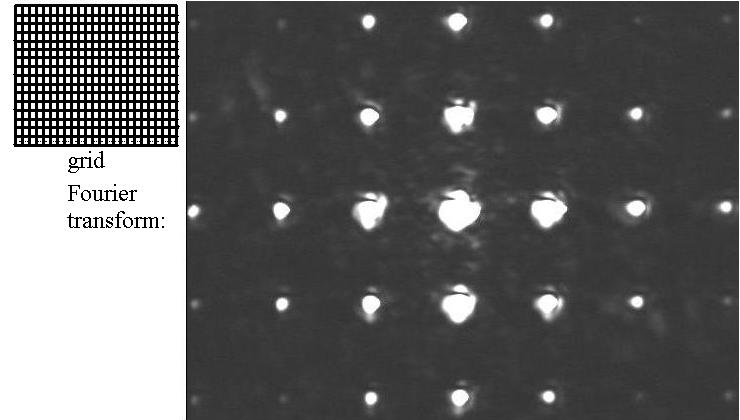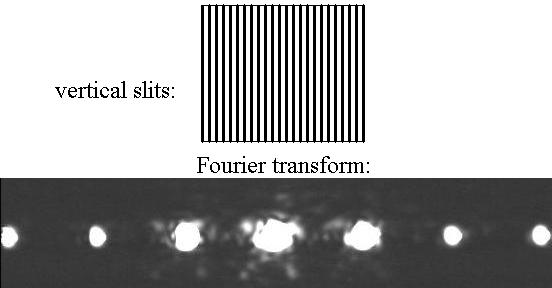
Optical Computing
The concept of optical computing is simple: spatial filtering of a Fourier transform can be used to compare an input to a reference. A typical optical system consists of a light source, a collimating lens, a mask, and a second lens to take the inverse Fourier transform.


 The mask serves to
eliminate certain spatial frequencies by physically blocking
light passing through the Fourier transform plane. Essentially,
this optical system produces both the convolution and correlation
of the input and mask at the output. A simple example is
illustrated here. Say a mask is created from the Fourier
transform of parallel vertical lines. When a grid is incident on
this mask, only the points common to both are allowed to pass,
yielding vertical lines at the output.
The mask serves to
eliminate certain spatial frequencies by physically blocking
light passing through the Fourier transform plane. Essentially,
this optical system produces both the convolution and correlation
of the input and mask at the output. A simple example is
illustrated here. Say a mask is created from the Fourier
transform of parallel vertical lines. When a grid is incident on
this mask, only the points common to both are allowed to pass,
yielding vertical lines at the output.